The pulley shown in figure has a moment of inertia I about it's axis and its radius is R. Find the magnitude of the acceleration of the two blocks. Assume that the string is light and does not slip on the pulley.
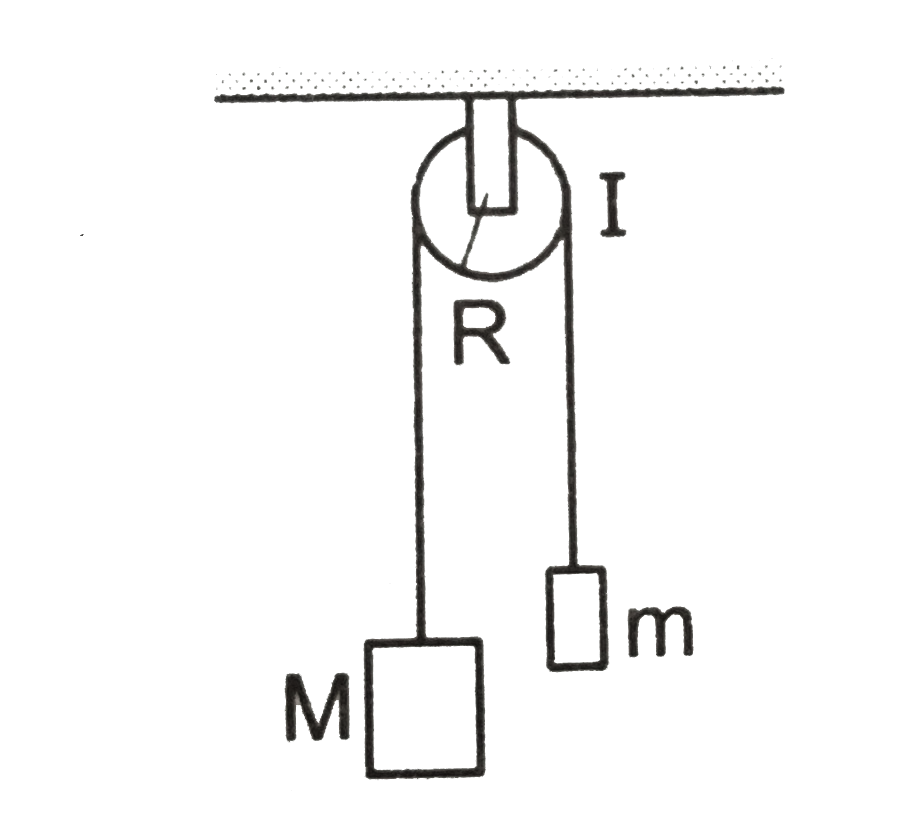 Solution in Tamil
Solution in Tamil
Suppose the tension in the sleft string is T1andthat in the right string is T2. Suppose the block of mas M goes down with an acceleration a and the other block moves up wit the same acceleration. This is also the tangential acceleration of the rim of the wheel as the string does not slip over the rim. the angular acceleration of the wheel is theerfore α=aR. The equation of motiooin for the mass M the mass m and the pulley are as follows:
Mg-T_1=Ma..........i<br>T2−mg=ma......ii
T1R−T2R=Iα=IaR ............iii
putting T1andT2 from i and ii and iii
[M(g−a)−m(g+a)]RIaR
which gives a=(M−m)gR2I+(M+m)R2
Topper's Solved these Questions
- BOOK - HC VERMACHAPTER - ROTATIONAL MECHANICSEXERCISE - Questions for short Answer22videos
ROTATIONAL MECHANICS
- BOOK - HC VERMACHAPTER - ROTATIONAL MECHANICSEXERCISE - Objective -126videos
ROTATIONAL MECHANICS
- BOOK - HC VERMACHAPTER - ROTATIONAL MECHANICSEXERCISE - Exercises86videos
ROTATIONAL MECHANICS
- BOOK - HC VERMACHAPTER - REST AND MOTION : KINEMATICSEXERCISE - Exercises51videos
REST AND MOTION : KINEMATICS
- BOOK - HC VERMACHAPTER - SIMPLE HARMONIC MOTIONEXERCISE - Exercises58videos
SIMPLE HARMONIC MOTION
Similar Questions
Can an object be in pure translation as well as in pure rotation?
14:58View SolutionLet →A be a unit vector along the axis of rotation of a purely rotating body and →B be a unit vector along the velocity of a particle P of the body away from the axis. The value of →A.→B is
View SolutionA wheel is making revolutions about its axis with uniform angular acceleration. Starting from rest, till it reaches 100 rev/sec in 4 seconds. Find the angular acceleration.
06:09View SolutionA man goes 10 m due east and then 24 m due north. Find the distance of his current position from the starting point ?
02:22View SolutionA particle executes simple harmonic motion with an amplitude of 10 cm and time period 6s. At t=0 it is at position x=5 cm going towards positive x-direction. Write the equation for the displacement x at time t. Find the magnitude of the acceleration of the particle at t=4s.
03:38View SolutionConsider the situation shown in figure. All the surfaces are frictions and the string and the pulley are light. Find the magnitude of the acceleration of the two blocks.
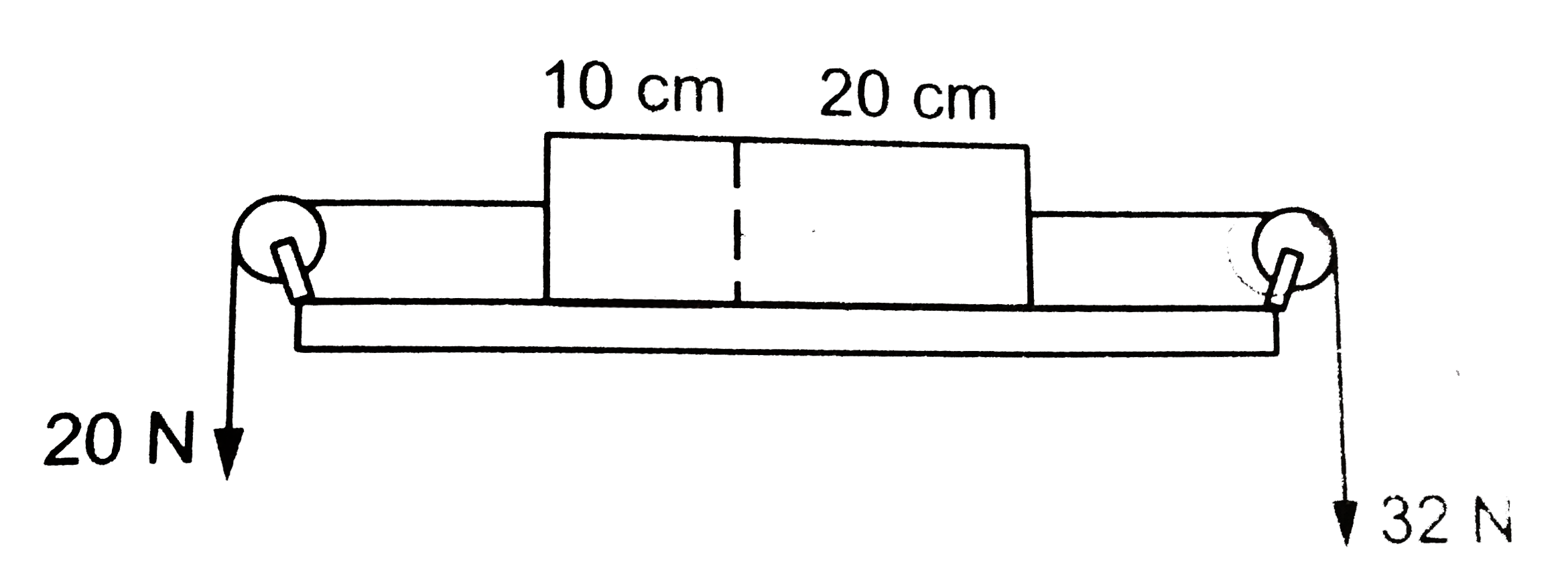 07:07View Solution
07:07View SolutionSolve the previous problem if the pulley has a moment of inertia I about its axis and the string does not slip over it.
14:27View SolutionConsider the situation as shown. The pulley has a moment of inertia I, and radius r, the block is in equilibrium. Find the time period of mass m. Assume no slipping.
05:15View SolutionAn object of mass m is tied to a light string wound around a pulley that has a moment of inertia I and radius R. The wheel bearing is fricrtionless and the string does not slip on the run. Find the tension in the string and the acceleration of the object.
06:33View SolutionTwo blocks are connected by a string that passes over a pulley of radius R and moment of inertia I. The block of mass m1 sides on a frictionless, horizontal surface, the block of mass m2 is suspended from the string. Find the acceleration a of the blocks and the tension T1 and T2 assuming that the string does not slip on the pulley.
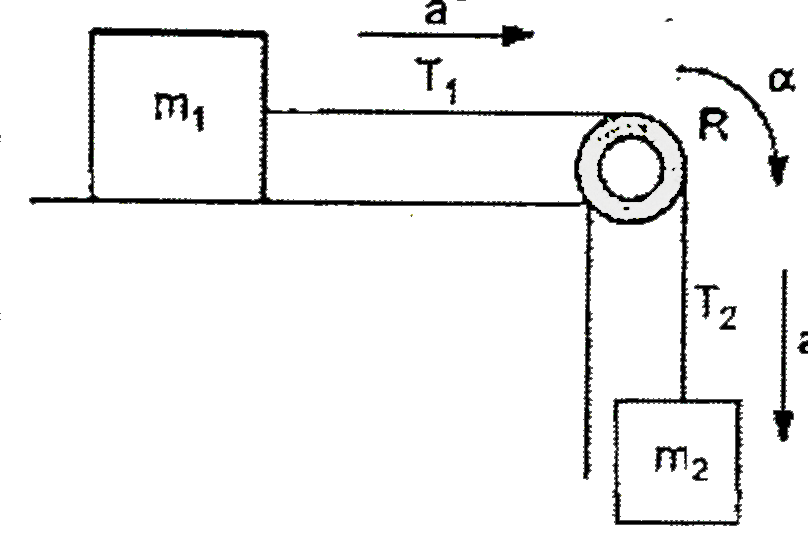 04:13View Solution
04:13View Solutionचित्र 18.W3 में दिखाई गई घिरनी की त्रिज्या R तथा अपने अक्ष के प्रति जड़त्व आघूर्ण। है। रस्सी नगण्य भार बाली है और घिरनी पर नहीं फिसलती है दोनों गुटको के त्वरण का परिमाण निकालें
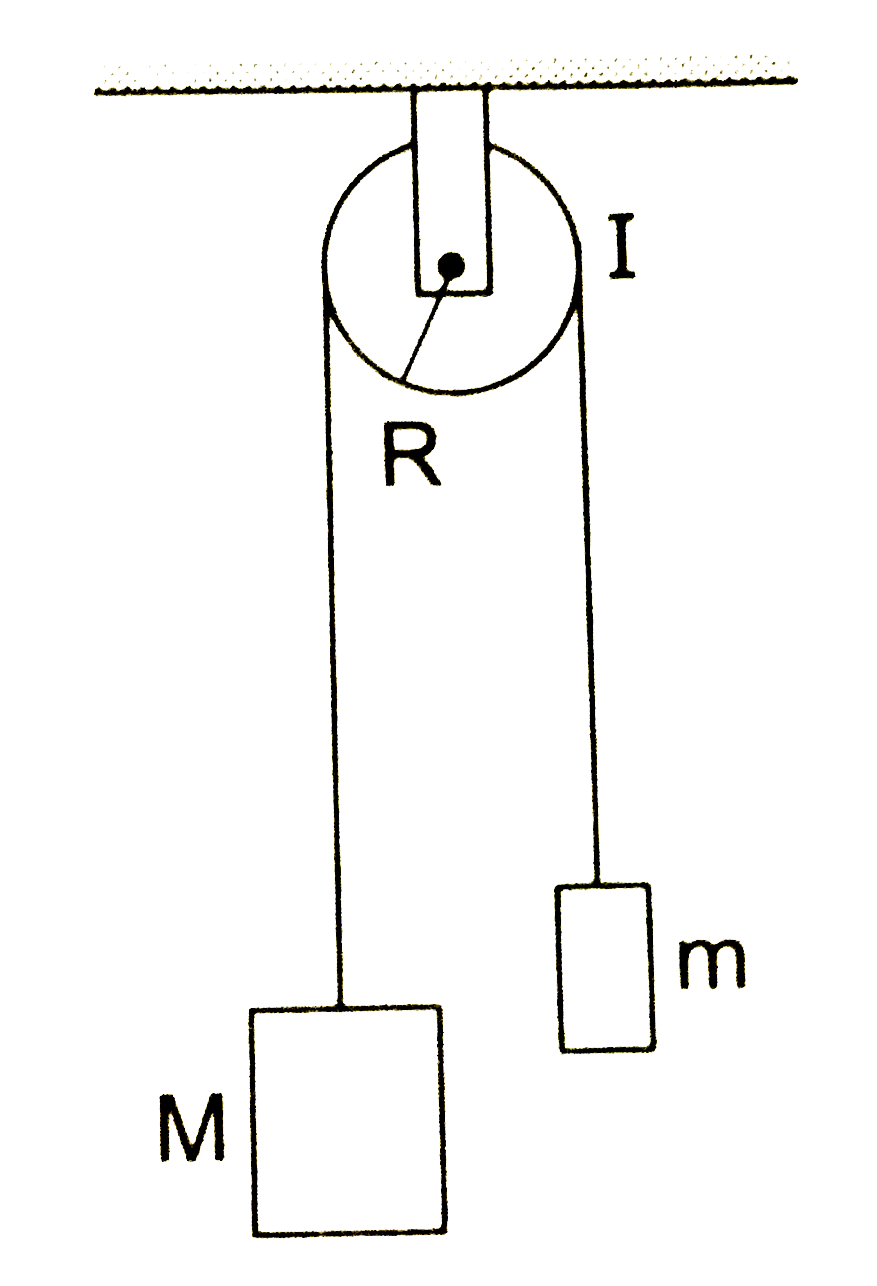 07:58View Solution
07:58View Solutionदो द्रव्यमान तथा M एक घिरनी पर से होकर गुजर रही एक रस्सी से जुड़ हुए है (चित्र 18.E4)। द्रव्यमान m चिकनी क्षैतिज टेबुल पर फिसलता है। घिरनी की त्रिज्या r है तथा अक्ष के परितः इसक जड़त्व आघूर्ण I है। यह अपने अक्ष के परितः मुक्त रूप से घूर्णन कर सकती है। यह मानते हुए कि घिरनी पर रस्सी फिसलती नहीं है, द्रव्यमान M का त्वरण ज्ञात करें
 View Solution
View SolutionIn the figure, the blocks unequal masses m1 and m2 (m1<m2).m2 has a downward acceleration a. The pulley P has a radius r, and some mass. The string does not slip on the pulley. Find the acceleration of block and angular acceleration of pulley. (I = momentum of inerita of pulley)
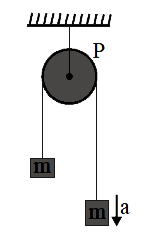 View Solution
View SolutionThree blocks of masses m1,m2andm3 are connected as shown in the figure. All the surfaces are frictionless and the string and the pulleys are light. Find the acceleration of m1
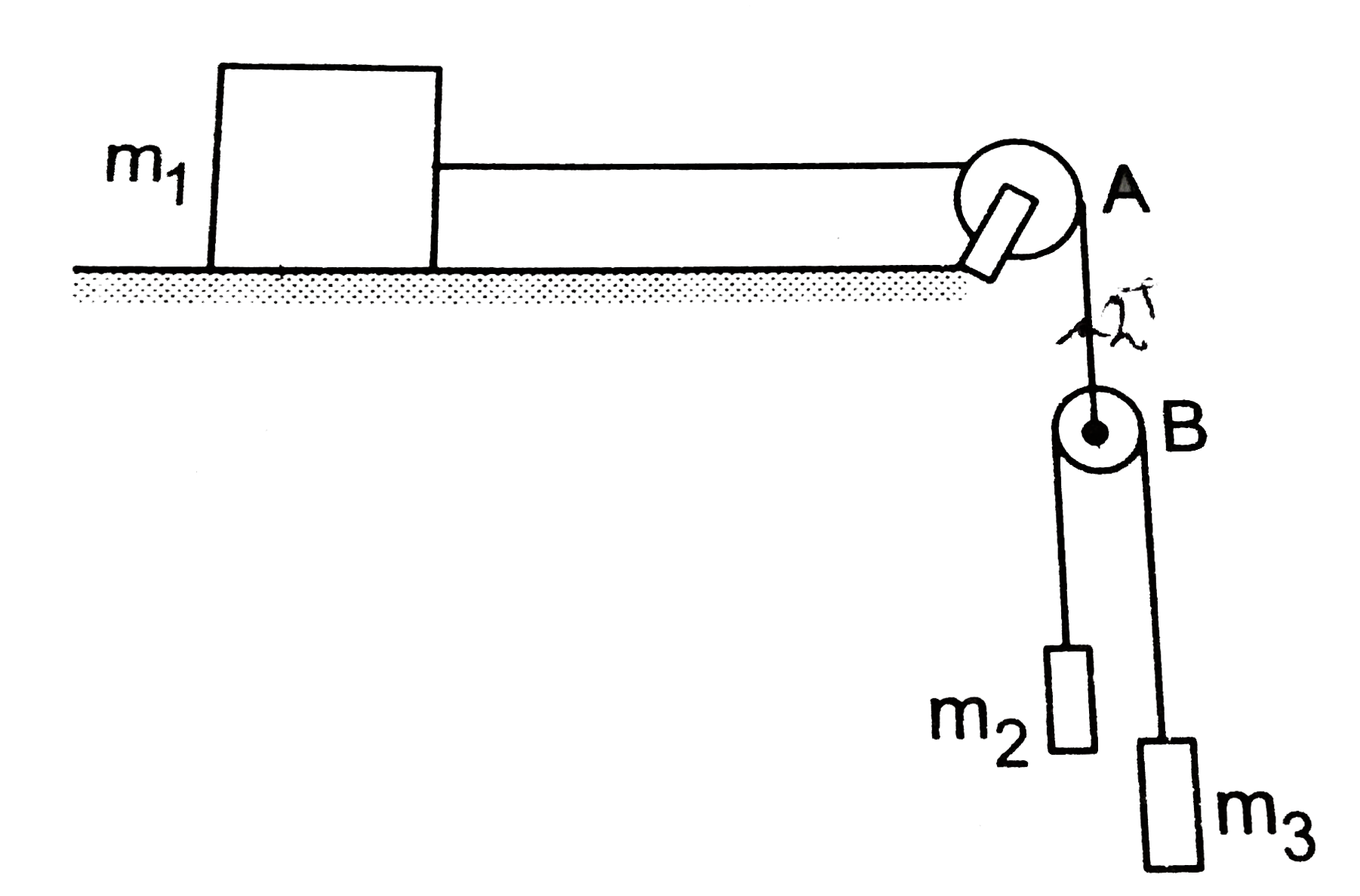 View Solution
View SolutionFigure shows two blocks of masses m and M connected by a string passing over a pulley. The horizontal table over which the mass m slides is smooth. The pulley has a radius r and moment of inertia I about its axis and it can freely rotate about this axis. Find the acceleration of the mass M assuming that the string does not slip on the pulley.
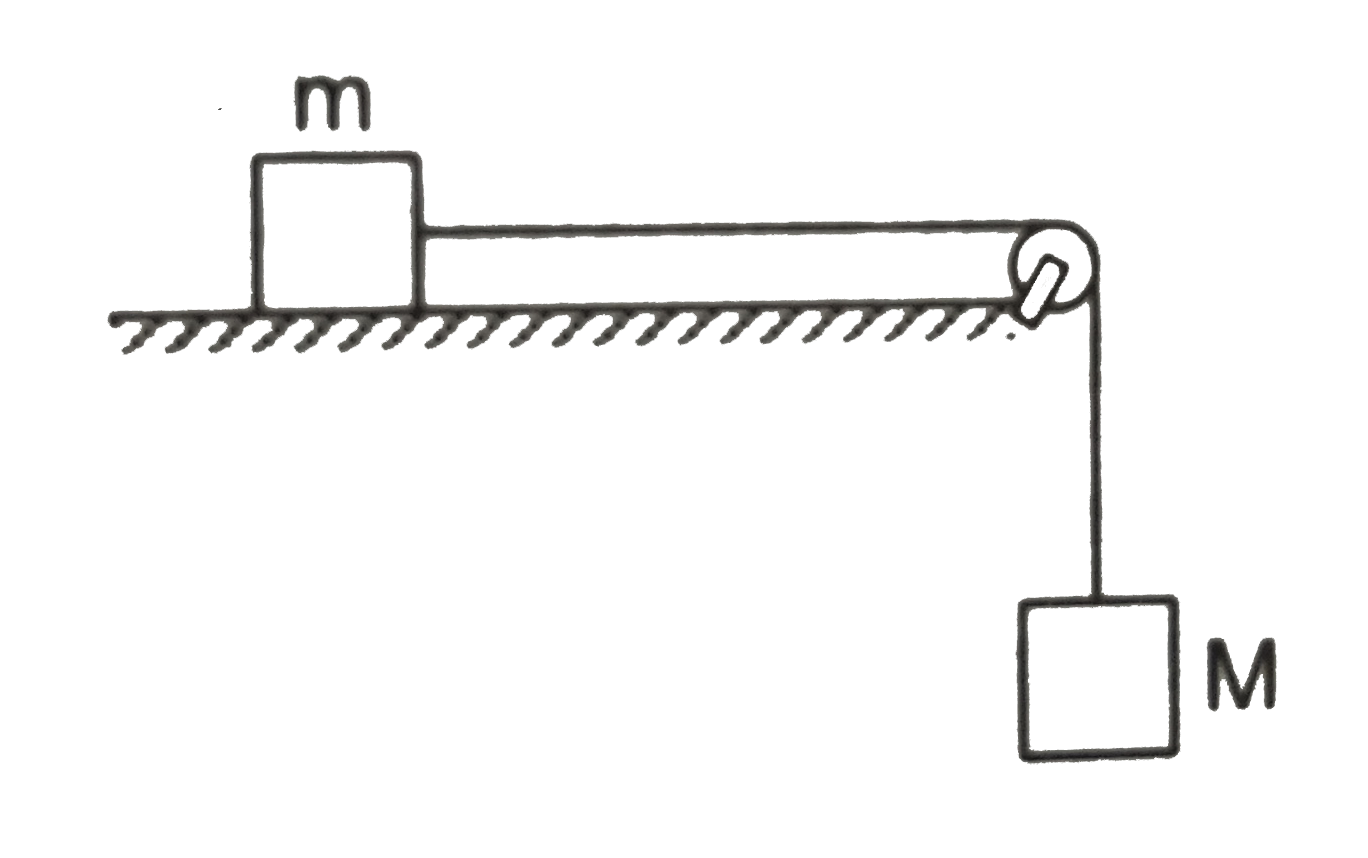 View Solution
View SolutionThe pulleys in figure are identical, each having a radius R and moment of inertia I. Find the acceleration of the block M.
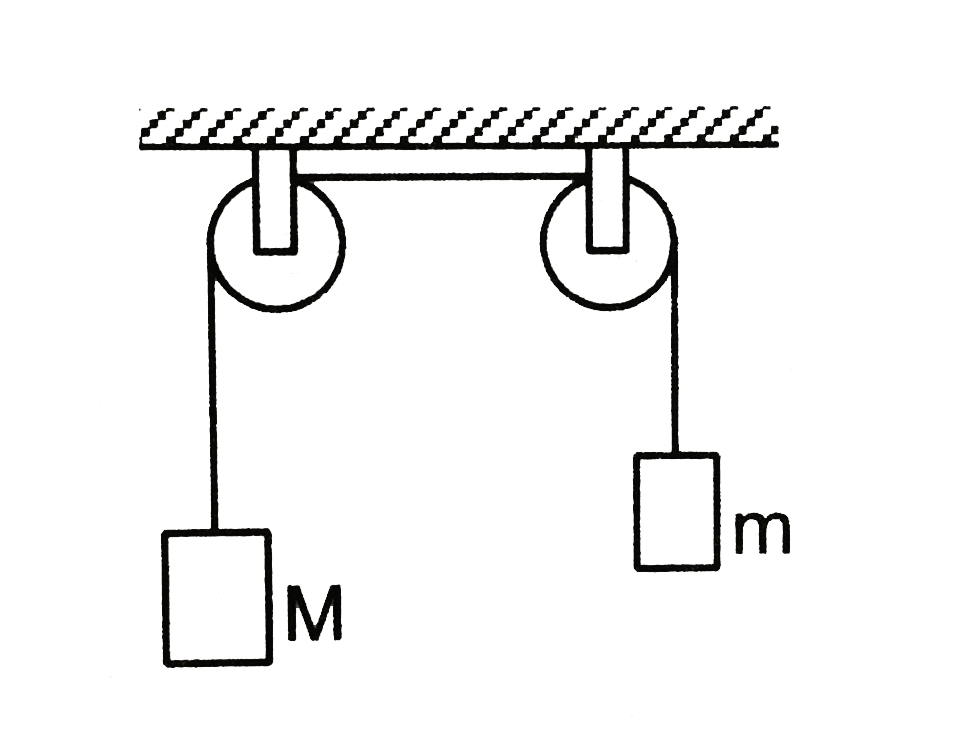 06:01View Solution
06:01View Solution

